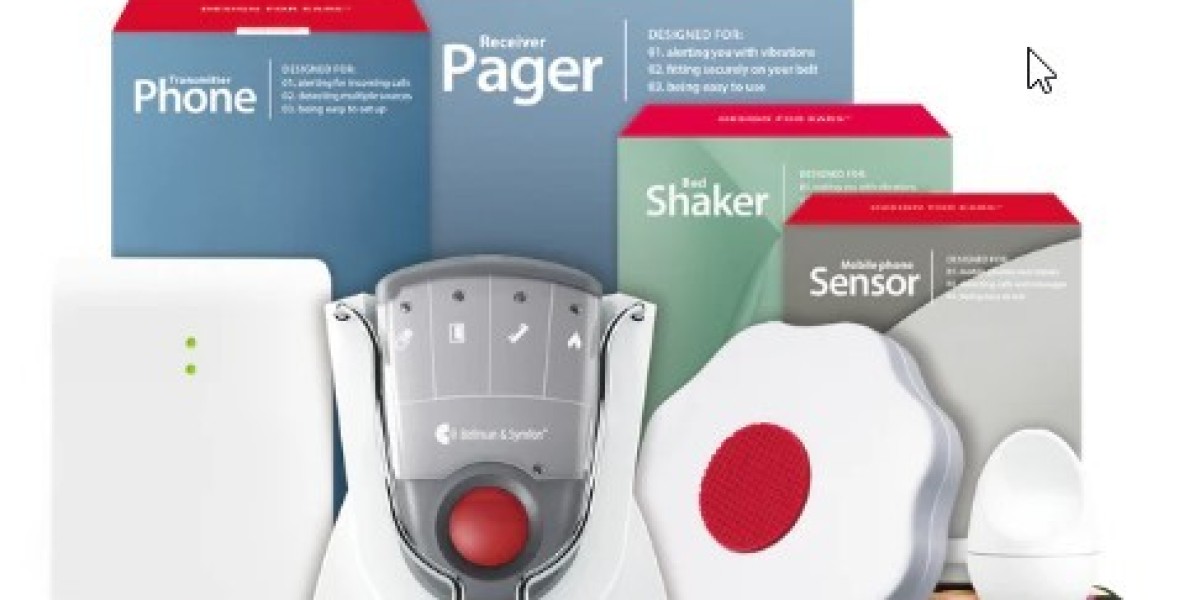Most people take their home smoke alarms for granted. They install one, test it once in a while, and move on. But for someone who’s deaf or hard of hearing, traditional alarms aren’t enough. A regular alarm’s loud beeping simply doesn’t work if you can’t hear it.
That’s why having the right fire alarm for deaf individuals is so important. It’s not about being cautious—it’s about being safe, informed, and independent.
Why Regular Smoke Alarms Aren’t Enough
Standard smoke detectors rely on sound. They use loud beeps or sirens to wake people up or alert them to danger. But if you can’t hear those alarms, that protection disappears.
Imagine being asleep, and smoke fills your home. You won’t hear a thing. That’s a nightmare scenario no one should face. For people who are deaf or hard of hearing, that’s a real risk—especially at night.
That’s where smoke alarms for the deaf and hearing impaired come in. They don’t just make noise. They use other senses—light and vibration—to wake you up and get your attention fast.
How Smoke Alarms for the Deaf Work
These alarms are designed with accessibility and safety in mind. They connect to transmitters that detect smoke or fire, then trigger strong vibrations or bright flashing lights.
The goal is simple: alert you in a way that matches your needs. Many systems use bed shakers—devices placed under your pillow or mattress that vibrate when an alarm goes off. Others use flashing strobes bright enough to wake you from a deep sleep.
Some models even link to a comprehensive home notification system, alerting you through multiple devices simultaneously. This layered approach helps ensure that, no matter where you are—be it the bedroom, living room, or kitchen—you’re notified the moment danger appears.
The Role of ADA Standards in Fire Safety
Fire safety for everyone is a legal requirement, not a luxury. Under the Americans with Disabilities Act (ADA), housing providers, workplaces, and public spaces must make sure people with disabilities have equal access to safety systems.
That’s where the concept of an ADA smoke detector comes in. These devices meet specific guidelines to make sure alerts are effective for people with hearing impairments. They often include both visual and tactile features—flashing lights, vibration, or connection to a visual alert system.
The idea is that fire safety shouldn’t depend on hearing. It should depend on awareness.
Midway through this conversation about safety, it’s worth highlighting that reliable solutions like the fire alarm for deaf and smoke alarms for the deaf and hearing impaired are designed exactly for that purpose. Bellman & Symfon’s system, for example, uses wireless transmitters to alert you through flashing lights, vibration, or both—giving total coverage day or night.
Real-Life Scenarios: Why These Systems Matter
Let’s talk about real-life use. Picture a college student with partial hearing loss living in a dorm. Regular fire drills are chaotic, and standard alarms don’t provide much help. With an accessible alarm system that flashes or vibrates, the student gains independence and confidence.
Or think about an elderly couple—one hearing, one hard of hearing. A connected alarm ensures that if one person doesn’t hear it, the other still gets notified visually or through vibration. It keeps both safe without adding stress or confusion.
Parents of children with hearing impairments often say these systems give them peace of mind. They can sleep knowing their child will be alerted if anything goes wrong during the night.
These examples aren’t rare—they’re everyday situations where a reliable alert system truly makes a difference.
What Features to Look For
When choosing the right system, it helps to know what matters most. Here are a few essentials:
Strong Vibration Alerts: Enough to wake someone from deep sleep.
Flashing Strobe Lights: Bright enough to be seen across the room.
Wireless Connectivity: So it can link to other home alert devices.
Battery Backup: Keeps working even during power outages.
Easy Setup: Because safety should never be complicated.
Products like Bellman & Symfon’s alarm transmitter check all these boxes. Their systems are built with daily usability in mind—no confusing setup, no unnecessary features. Just straightforward, dependable protection.
Peace of Mind, Day and Night
Home safety isn’t about paranoia—it’s about preparedness. And for people with hearing challenges, it’s about creating a world where alerts are seen and felt, not just heard.
A fire alarm for deaf individuals is more than a device. It’s a connection to safety, independence, and confidence. You don’t have to rely on someone else to warn you—you’ll know right away.
These alarms also protect families, caregivers, and loved ones by reducing the chance of missed alerts. Everyone rests easier when the system works for every member of the household.
Accessibility Means True Safety
Safety technology has undergone significant improvements over the past decade. But what makes today’s systems stand out is how inclusive they’ve become. The best ADA smoke detector designs aren’t just code-compliant—they’re user-friendly. They blend into everyday life while quietly protecting what matters most.
And unlike older systems, modern devices don’t require complicated wiring or maintenance. They’re simple to install, easy to test, and last for years. That’s technology done right—built for real homes and real people.
Final Thoughts
Fire safety isn’t one-size-fits-all. What works for one person might not work for another. That’s why inclusive designs like smoke alarms for the deaf and hearing impaired are so important. They fill a gap that traditional alarms can’t cover—and they do it with reliability, not noise.
Whether you’re setting up a home, apartment, or dorm room, make sure every person inside can receive an alert. You can’t predict an emergency—but you can prepare for it.
The truth is simple: a safe home is one where everyone, regardless of hearing ability, can sense danger and act fast. That’s real peace of mind—and that’s what the best fire and smoke alarms deliver.






